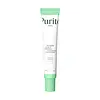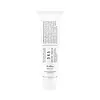What's inside
What's inside
 Key Ingredients
Key Ingredients

 Benefits
Benefits

 Concerns
Concerns

No concerns
 Ingredients Side-by-side
Ingredients Side-by-side

Water
Skin ConditioningHydrogenated Poly(C6-14 Olefin)
EmollientButylene Glycol
HumectantGlycerin
HumectantCetyl Ethylhexanoate
EmollientCaprylic/Capric Triglyceride
MaskingCentella Asiatica Extract
CleansingCetyl Alcohol
EmollientDipropylene Glycol
HumectantMethyl Trimethicone
Skin Conditioning1,2-Hexanediol
Skin ConditioningDipentaerythrityl Hexa C5-9 Acid Esters
Skin ConditioningPentaerythrityl Tetraisostearate
EmollientPotassium Cetyl Phosphate
EmulsifyingPalmitoyl Dipeptide-10
Skin ConditioningPalmitoyl Tetrapeptide-7
Skin ConditioningPalmitoyl Tripeptide-1
Skin ConditioningPalmitoyl Hexapeptide-12
Skin ConditioningSodium Hyaluronate
HumectantAsiaticoside
AntioxidantMadecassic Acid
Skin ConditioningAsiatic Acid
Skin ConditioningMadecassoside
AntioxidantCetearyl Alcohol
EmollientCetearyl Olivate
Sorbitan Olivate
EmulsifyingCaprylyl Glycol
EmollientPalmitic Acid
EmollientPanthenol
Skin ConditioningStearic Acid
CleansingCetearyl Glucoside
EmulsifyingCarbomer
Emulsion StabilisingTromethamine
BufferingLimnanthes Alba Seed Oil
Skin ConditioningArgania Spinosa Kernel Oil
EmollientCeramide NP
Skin ConditioningMacadamia Ternifolia Seed Oil
EmollientAdenosine
Skin ConditioningDisodium EDTA
Butyrospermum Parkii Butter
Skin ConditioningGlucose
HumectantMyristic Acid
CleansingArachidic Acid
CleansingCamellia Sinensis Leaf Extract
AntimicrobialWater, Hydrogenated Poly(C6-14 Olefin), Butylene Glycol, Glycerin, Cetyl Ethylhexanoate, Caprylic/Capric Triglyceride, Centella Asiatica Extract, Cetyl Alcohol, Dipropylene Glycol, Methyl Trimethicone, 1,2-Hexanediol, Dipentaerythrityl Hexa C5-9 Acid Esters, Pentaerythrityl Tetraisostearate, Potassium Cetyl Phosphate, Palmitoyl Dipeptide-10, Palmitoyl Tetrapeptide-7, Palmitoyl Tripeptide-1, Palmitoyl Hexapeptide-12, Sodium Hyaluronate, Asiaticoside, Madecassic Acid, Asiatic Acid, Madecassoside, Cetearyl Alcohol, Cetearyl Olivate, Sorbitan Olivate, Caprylyl Glycol, Palmitic Acid, Panthenol, Stearic Acid, Cetearyl Glucoside, Carbomer, Tromethamine, Limnanthes Alba Seed Oil, Argania Spinosa Kernel Oil, Ceramide NP, Macadamia Ternifolia Seed Oil, Adenosine, Disodium EDTA, Butyrospermum Parkii Butter, Glucose, Myristic Acid, Arachidic Acid, Camellia Sinensis Leaf Extract
Water
Skin ConditioningMelaleuca Alternifolia Leaf Water
AntimicrobialPropanediol
SolventGlycerin
Humectant1,2-Hexanediol
Skin ConditioningHydrogenated Polydecene
EmollientVinyldimethicone
C14-22 Alcohols
Emulsion StabilisingNiacinamide
SmoothingCaprylic/Capric Triglyceride
MaskingPanthenol
Skin ConditioningDicaprylyl Carbonate
EmollientButylene Glycol
HumectantAmmonium Acryloyldimethyltaurate/Vp Copolymer
Caprylyl Methicone
Skin ConditioningPolymethylsilsesquioxane
C12-20 Alkyl Glucoside
EmulsifyingHydroxyacetophenone
AntioxidantAcrylates/C10-30 Alkyl Acrylate Crosspolymer
Emulsion StabilisingPolyquaternium-51
Skin ConditioningEthylhexylglycerin
Skin ConditioningTromethamine
BufferingSodium Hyaluronate
HumectantSodium Stearoyl Glutamate
CleansingCoptis Japonica Root Extract
Skin ConditioningCentella Asiatica Leaf Water
Skin ConditioningBeta-Glucan
Skin ConditioningResveratrol
AntioxidantHydrolyzed Hyaluronic Acid
HumectantCamellia Sinensis Leaf Water
MaskingTocopherol
AntioxidantMadecassoside
AntioxidantSodium Dna
Skin ConditioningCentella Asiatica Extract
CleansingCeramide NP
Skin ConditioningTannic Acid
AstringentDisodium EDTA
Sodium Phytate
Water, Melaleuca Alternifolia Leaf Water, Propanediol, Glycerin, 1,2-Hexanediol, Hydrogenated Polydecene, Vinyldimethicone, C14-22 Alcohols, Niacinamide, Caprylic/Capric Triglyceride, Panthenol, Dicaprylyl Carbonate, Butylene Glycol, Ammonium Acryloyldimethyltaurate/Vp Copolymer, Caprylyl Methicone, Polymethylsilsesquioxane, C12-20 Alkyl Glucoside, Hydroxyacetophenone, Acrylates/C10-30 Alkyl Acrylate Crosspolymer, Polyquaternium-51, Ethylhexylglycerin, Tromethamine, Sodium Hyaluronate, Sodium Stearoyl Glutamate, Coptis Japonica Root Extract, Centella Asiatica Leaf Water, Beta-Glucan, Resveratrol, Hydrolyzed Hyaluronic Acid, Camellia Sinensis Leaf Water, Tocopherol, Madecassoside, Sodium Dna, Centella Asiatica Extract, Ceramide NP, Tannic Acid, Disodium EDTA, Sodium Phytate
 Reviews
Reviews

Ingredients Explained
These ingredients are found in both products.
Ingredients higher up in an ingredient list are typically present in a larger amount.
1,2-Hexanediol is a synthetic liquid and another multi-functional powerhouse.
It is a:
- Humectant, drawing moisture into the skin
- Emollient, helping to soften skin
- Solvent, dispersing and stabilizing formulas
- Preservative booster, enhancing the antimicrobial activity of other preservatives
Butylene Glycol (or BG) is used within cosmetic products for a few different reasons:
Overall, Butylene Glycol is a safe and well-rounded ingredient that works well with other ingredients.
Though this ingredient works well with most skin types, some people with sensitive skin may experience a reaction such as allergic rashes, closed comedones, or itchiness.
Learn more about Butylene GlycolThis ingredient is an emollient, solvent, and texture enhancer. It is considered a skin-softener by helping the skin prevent moisture loss.
It helps thicken a product's formula and makes it easier to spread by dissolving clumping compounds.
Caprylic Triglyceride is made by combining glycerin with coconut oil, forming a clear liquid.
While there is an assumption Caprylic Triglyceride can clog pores due to it being derived from coconut oil, there is no research supporting this.
Learn more about Caprylic/Capric TriglycerideCentella Asiatica Extract (Centella) is derived from an herb native to Southeast Asia. It is famous for its anti-inflammatory and soothing properties.
Centella is rich in antioxidants and amino acids, such as Madecassic Acid and Asiaticoside.
Studies show the compounds in centella help with:
The combination of all these properties makes centella effective at soothing, hydrating, and protecting the skin.
Other great components of centella include Vitamin A, vitamin C, several B vitamins, and Asiatic Acid.
Fun fact: Centella has been used as a medicine and in food for many centuries. As a medicine, it is used to treat burns, scratches, and wounds.
Learn more about Centella Asiatica ExtractCeramide NP is a type of ceramide and formally known as ceramide 3.
Ceramides are intercellular lipids naturally found in our skin that bonds dead skin cells together to create a barrier. They are known for their ability to hold water and thus are a great ingredient for dry skin.
Ceramides are an important building block for our skin barrier. A stronger barrier helps the skin look more firm and hydrated. By bolstering the skin ceramides act as a barrier against irritating ingredients. This can help with inflammation as well.
If you would like to eat ceramides, sweet potatoes contain a small amount.
Read more about other common types of ceramides here:
Ceramide AP
Ceramide EOP
Disodium EDTA plays a role in making products more stable by aiding other preservatives.
It is a chelating agent, meaning it neutralizes metal ions that may be found in a product.
Disodium EDTA is a salt of edetic acid and is found to be safe in cosmetic ingredients.
Learn more about Disodium EDTAGlycerin is already naturally found in your skin. It helps moisturize and protect your skin.
A study from 2016 found glycerin to be more effective as a humectant than AHAs and hyaluronic acid.
As a humectant, it helps the skin stay hydrated by pulling moisture to your skin. The low molecular weight of glycerin allows it to pull moisture into the deeper layers of your skin.
Hydrated skin improves your skin barrier; Your skin barrier helps protect against irritants and bacteria.
Glycerin has also been found to have antimicrobial and antiviral properties. Due to these properties, glycerin is often used in wound and burn treatments.
In cosmetics, glycerin is usually derived from plants such as soybean or palm. However, it can also be sourced from animals, such as tallow or animal fat.
This ingredient is organic, colorless, odorless, and non-toxic.
Glycerin is the name for this ingredient in American English. British English uses Glycerol/Glycerine.
Learn more about GlycerinMadecassoside comes from the super popular skin-soothing ingredient, Centella asiatica. It is one of four active compounds found in the extract of Centella Asiatica.
Madecassoside has antioxidant, anti-inflammatory, and hydrating properties. It contains fatty acids, amino acids, beta-carotene, and phytochemicals.
One study found using Madecassoside with ascorbic acid helped reduce the signs of aging and improved skin hydration.
Learn more about MadecassosidePanthenol is a common ingredient that helps hydrate and soothe the skin. It is found naturally in our skin and hair.
There are two forms of panthenol: D and L.
D-panthenol is also known as dexpanthenol. Most cosmetics use dexpanthenol or a mixture of D and L-panthenol.
Panthenol is famous due to its ability to go deeper into the skin's layers. Using this ingredient has numerous pros (and no cons):
Like hyaluronic acid, panthenol is a humectant. Humectants are able to bind and hold large amounts of water to keep skin hydrated.
This ingredient works well for wound healing. It works by increasing tissue in the wound and helps close open wounds.
Once oxidized, panthenol converts to pantothenic acid. Panthothenic acid is found in all living cells.
This ingredient is also referred to as pro-vitamin B5.
Learn more about PanthenolSodium Hyaluronate is hyaluronic acid's salt form. It is commonly derived from the sodium salt of hyaluronic acid.
Like hyaluronic acid, it is great at holding water and acts as a humectant. This makes it a great skin hydrating ingredient.
Sodium Hyaluronate is naturally occurring in our bodies and is mostly found in eye fluid and joints.
These are some other common types of Hyaluronic Acid:
Learn more about Sodium HyaluronateTromethamine helps balance the pH and improve the texture of a product. It is synthetically created.
As an emulsifier, Tromethamine prevents oil and water ingredients from separating. This helps stabilize the product and elongate a product's shelf life. Tromethamine also makes a product thicker.
Tromethamine helps balance the pH level of a product. Normal pH level of skin is slightly acidic (~4.75-5.5). The acidity of our skin is maintained by our glands and skin biome. Being slightly acidic allows our skin to create an "acid mantle". This acid mantle is a thin barrier that protects our skin from bacteria and contaminants.
Oral Tromethanmine is an anti-inflammatory drug but plays the role of masking, adding fragrance, and/or balancing pH in skincare.
1,3-Propanediol, 2-amino-2-(hydroxymethyl)-
Learn more about TromethamineWater. It's the most common cosmetic ingredient of all. You'll usually see it at the top of ingredient lists, meaning that it makes up the largest part of the product.
So why is it so popular? Water most often acts as a solvent - this means that it helps dissolve other ingredients into the formulation.
You'll also recognize water as that liquid we all need to stay alive. If you see this, drink a glass of water. Stay hydrated!
Learn more about Water